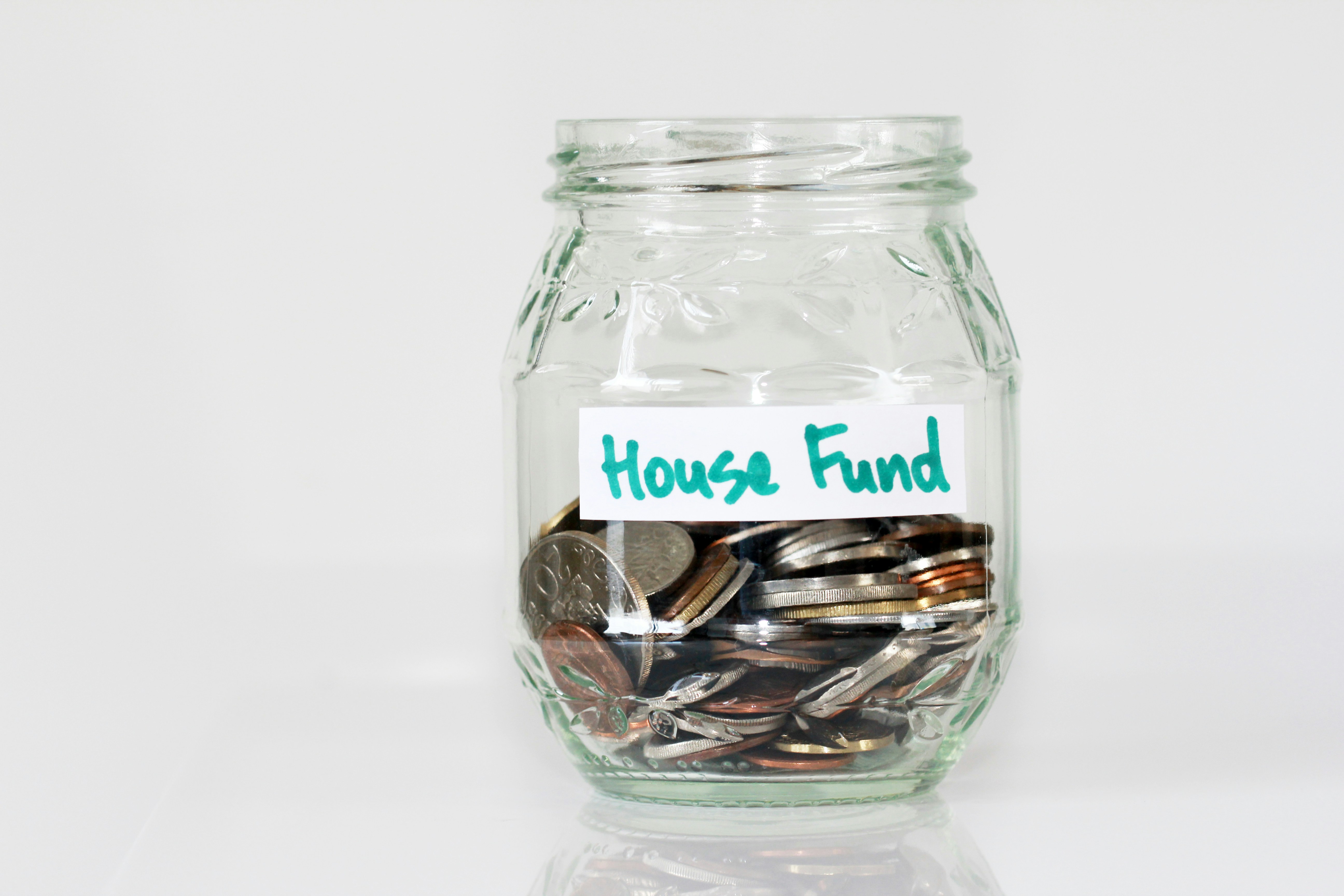7 Steps to Build an Emergency Fund from Scratch
Introduction to Emergency Funds
An emergency fund is a financial safety net designed to cover unexpected expenses that may arise in life. It serves a crucial purpose in personal finance, offering a buffer against unforeseen financial emergencies such as medical bills, car repairs, or job loss. The significance of having an emergency fund cannot be overstated, as it not only provides monetary support during challenging times but also fosters a sense of security and peace of mind.
One of the primary benefits of maintaining an emergency fund is that it enables individuals to navigate through life’s unpredictabilities without resorting to high-interest loans or credit card debt. When unexpected bills arise, having savings readily available can significantly reduce stress and allow for more informed decision-making. The absence of an emergency fund often leads individuals to experience financial strain and anxiety, particularly when they encounter a significant expense that disrupts their day-to-day financial stability.
Common financial emergencies that typically necessitate an emergency fund include unexpected medical emergencies, urgent home repairs, car accidents, or even job losses that may lead to a temporary disruption in income. These situations can arise without warning, and without adequate savings, individuals may find themselves in precarious financial positions. By establishing an emergency fund, one can mitigate the impact of these unforeseen events, ensuring that basic needs and obligations can still be met.
Ultimately, an effective emergency fund serves not only as a practical resource but also as a foundational element of responsible financial management. It lays the groundwork for a more stable financial future, empowering individuals to weather life’s challenges with confidence and resilience. By understanding the importance of an emergency fund, individuals can better position themselves to respond to the unexpected events that life may present.
Step 1: Assess Your Current Financial Situation
Building an emergency fund requires a clear understanding of one’s current financial landscape. This initial step involves a comprehensive assessment of your income, expenses, debts, and any existing savings. The first task is to calculate your total monthly income. This should include all sources of revenue, such as salary, freelance work, rental income, or any side gigs. Once you have a figure, the next step is to outline your fixed and variable monthly expenses, which encompass housing costs, utilities, groceries, insurance, and discretionary spending.
It is essential to distinguish between needs and wants during this evaluation. Needs refer to mandatory expenses required for basic living, while wants are more discretionary in nature. This distinction will help focus your efforts on what can be adjusted or eliminated. After documenting your expenses, calculate your total monthly debt obligations, which include credit card payments, student loans, and any other liabilities. Understanding this financial obligation is crucial as it will impact how much you can set aside for your emergency fund.
Now that you have a clearer picture of your financial situation, subtract your total expenses and debt obligations from your monthly income. This will enable you to determine your discretionary income, the amount of money you have available to allocate towards your emergency fund. Furthermore, if you have existing savings, evaluate how those can be utilized. Perhaps a portion of these savings can kick-start your emergency fund without putting additional strain on your budget. Overall, creating a financial snapshot will provide critical insight and set the groundwork for establishing a robust emergency fund that can safeguard against unforeseen expenses in the future.
Step 2: Set a Realistic Savings Goal
Establishing a realistic savings goal is a crucial component when building an emergency fund. The size of your emergency fund largely depends on your unique financial circumstances, particularly your monthly expenses and overall lifestyle choices. To determine the appropriate amount for your fund, begin by calculating your essential monthly expenses. This includes rent or mortgage, utility bills, groceries, transportation, insurance, and any other recurring costs necessary for maintaining your standard of living.
Financial experts typically recommend saving three to six months’ worth of expenses as a solid emergency fund. This range provides a buffer against unforeseen circumstances, such as job loss, medical emergencies, or unexpected repairs. However, the specific number of months you choose to aim for should reflect your personal situation. For example, if your job is relatively stable and you have additional income sources, you may be comfortable with a fund that covers three months of expenses. Conversely, if you work in a fluctuating industry or are the sole provider for your household, leaning towards six months or more may offer greater peace of mind.
Additionally, consider any unique factors that may impact your savings target. For instance, if you have dependents or specific obligations, such as health-related costs, you may want to save even more. Make sure to assess your risks and adjust your goal accordingly. It may also be helpful to increase your target as your financial situation evolves or if you anticipate any significant changes in your life, such as starting a family or changing careers. By setting a realistic and personalized savings goal, you position yourself to effectively build an emergency fund that truly meets your needs.
Step 3: Create a Budget and Identify Savings Opportunities
Creating a budget is a pivotal step in establishing an emergency fund, as it allows individuals to assess their financial situation comprehensively. A meticulously crafted budget acts as a roadmap, directing income to essential expenses while highlighting discretionary spending. To begin, one must track their current spending habits over a specified period, typically a month. This enables individuals to understand where their money is allocated and identify patterns that may not be immediately apparent.
Once spending is tracked, categorize expenses into fixed and variable costs. Fixed costs include rent or mortgage payments, utilities, and insurance, while variable costs encompass groceries, entertainment, and dining out. By distinguishing between these categories, individuals can prioritize necessary expenses and spot potential areas for savings. It is essential to scrutinize variable expenses, as they often harbor opportunities to cut back.
To effectively free up funds for an emergency savings goal, consider implementing various strategies. Firstly, review subscription services that may no longer be essential. Cancelling or downgrading these subscriptions can yield significant savings. Additionally, cooking meals at home instead of frequently eating out can drastically reduce food expenses. Moreover, seeking alternatives to pricey entertainment, such as local community events or at-home activities, can help balance enjoyment with frugality.
Another effective budgeting strategy is to set specific, achievable savings goals within the budget framework. Establishing a predetermined amount to save each month not only emphasizes the importance of this commitment but also fosters a sense of accomplishment as each goal is reached. Many individuals find success in automating their savings, enabling a portion of their income to directly transfer to their emergency fund. By diligently tracking spending and identifying savings opportunities, individuals will be well on their way to building a robust emergency fund, preparing them for unforeseen financial challenges.
Step 4: Choose a Dedicated Savings Account
Establishing an emergency fund involves not only saving money but also selecting the right type of savings account to safeguard and grow your funds. The account you choose will play a crucial role in your ability to access the money quickly when unexpected expenses arise while also taking advantage of interest rates that can help your fund grow over time. Three common types of savings accounts to consider for your emergency fund are high-yield savings accounts, money market accounts, and traditional savings accounts.
High-yield savings accounts typically offer higher interest rates compared to standard savings accounts, making them a popular choice for individuals seeking to maximize their earnings while keeping their funds accessible. These accounts are generally offered by online banks that can provide competitive interest rates due to lower operational costs. However, it is essential to verify any limits on withdrawals or transfers that might affect your immediate access to funds.
Money market accounts are another option worth considering. These accounts usually provide better interest rates than traditional savings accounts and come with features such as check-writing privileges or debit card access, thus enhancing liquidity. Nonetheless, these accounts may require a higher minimum balance to obtain favorable rates, so it is important to review the account requirements and fees to ensure it aligns with your financial situation.
On the other hand, traditional savings accounts are often more accessible at local banks and credit unions, with straightforward fee structures and easy maintenance. While interest rates on these accounts may not be as competitive, they offer convenience for those who prefer in-person banking services. Ultimately, the best choice for your emergency fund will depend on your individual needs and goals, balancing both accessibility and interest-earning potential to create a solid financial safety net.
Step 5: Set Up Automatic Transfers
Establishing an emergency fund is a crucial financial step, and automating your savings can significantly streamline the process. One effective strategy is to initiate automatic transfers from your primary banking account to your designated emergency fund. This method encourages consistent saving, making it easier to reach your financial goals without the temptation of discretionary spending.
To set up these automatic transfers, first, decide how much money you want to allocate to your emergency fund each month. This amount should align with your overall budget and financial capabilities, ensuring that saving does not compromise other essential expenses. Once you determine the appropriate figure, contact your bank or use its online banking platform to set up recurring transfers. Most banks allow transfers to be scheduled at regular intervals, such as weekly or monthly.
One of the key advantages of automation is that it removes the mental burden of remembering to save. By automatically moving funds into your emergency account, you create a “pay yourself first” mentality. This approach not only enhances your financial discipline but also guarantees that you are consistently contributing to your safety net. When savings are transferred before you have the opportunity to spend that money, you reduce the likelihood of withdrawing from your emergency fund for non-emergency expenses.
Moreover, automation can help establish a sense of priority in your financial objectives. As the balance of your emergency fund grows steadily through these transfers, you will be more likely to recognize the importance of having available funds for unexpected situations. Ultimately, setting up automatic transfers not only simplifies the process of building an emergency fund but also instills a habit of saving that can benefit your overall financial health.
Step 6: Monitor Your Progress
Monitoring your progress is a crucial step in building an emergency fund from scratch. It involves regularly assessing how much you have saved and how far you are from your savings goals. Establishing this practice not only helps in maintaining motivation but also enables you to identify any adjustments needed in your savings strategy. To effectively track the growth of your emergency fund, various methods can be employed.
One of the most effective tools for monitoring your savings progress is a financial app. Numerous applications are available today that cater specifically to personal finance management. These apps allow users to set savings goals, track their contributions, and visualize progress through engaging charts and graphs. By utilizing such technology, you can receive notifications about upcoming targets or alerts when you reach certain milestones, making the monitoring process both informative and enjoyable.
Alternatively, you might prefer a more traditional approach, such as using a spreadsheet to document your savings. This method provides flexibility, allowing you to create customized formulas that can calculate accumulated savings, interest earned, and projected timelines for reaching your goals. Spreadsheets offer a clear, concise view of your progress, which can reinforce commitment to your savings plan.
For those who favor a straightforward visual representation, simple charts can also be effective. You can create a bar or line chart representing each month’s savings contributions. Such visuals can be highly motivating, as they depict a tangible representation of your journey towards financial security. Regardless of the method chosen, consistent monitoring of your emergency fund will aid in maintaining focus, allowing you to celebrate successes and reassess strategies as needed.
Step 7: Adjust Your Fund As Needed
Once you have established an emergency fund, it is crucial to regularly reassess and adjust your savings goals to reflect changes in your financial situation. Life is unpredictable, and various factors may necessitate a reevaluation of your fund. This step ensures that you remain adequately prepared for unexpected expenses that may arise.
Begin by reviewing your financial circumstances at least annually or whenever significant life events occur, such as a job change, relocation, or a new addition to the family. Each of these scenarios may introduce new financial obligations, thereby altering the amount required in your emergency fund. For instance, if you have transitioned to a position with a higher income, it may be wise to increase your savings goal, as greater income can often lead to additional expenditures.
Moreover, consider adjusting your emergency fund based on shifts in your lifestyle. Large purchases, such as a new home or vehicle, or changes in health insurance plans can significantly impact your financial landscape. In these situations, recalibrating your fund helps maintain a safety net that aligns with your current reality.
Additionally, monitor any changes in your living expenses. If you have moved to an area with a higher cost of living, then your emergency fund should reflect this increase. The goal is to ensure that your savings cover three to six months of living expenses, providing a cushion during times of financial uncertainty.
Finally, when you adjust your emergency fund target, remember to maintain a disciplined approach. Continue to contribute regularly to your savings, ensuring it grows alongside your needs. By proactively managing your emergency fund, you can stay prepared for unforeseen expenses, ultimately securing your financial well-being.
Conclusion: The Peace of Mind of Having an Emergency Fund
Establishing an emergency fund is a crucial step towards achieving financial stability and peace of mind. The importance of creating an emergency fund cannot be overstated, as it serves as a financial safety net during unexpected events such as job loss, medical emergencies, or urgent home repairs. By having a designated amount of savings set aside, individuals can navigate these unforeseen challenges with greater confidence and reduced stress. This sense of security allows one to focus on managing the situation effectively without the added burden of financial worry.
A well-funded emergency account not only provides immediate access to financial resources but also encourages responsible saving habits. By regularly contributing to this fund, individuals cultivate a disciplined approach to their finances, making it easier to manage everyday expenses and plan for the future. This practice strengthens one’s overall financial health and prepares them for both expected and unexpected circumstances.
Furthermore, having an emergency fund emphasizes the significance of preparing for life’s uncertainties. It fosters a mindset of resilience, enabling individuals to face challenges head-on without compromising their financial stability. As the world becomes increasingly unpredictable, the value of an emergency fund amplifies, serving as a reminder that financial empowerment comes from preparedness. Ultimately, taking the necessary steps to build an emergency fund can lead to a more secure and stress-free life. Prioritizing this aspect of financial management signifies a commitment to safeguarding oneself against potential setbacks, ensuring that one is better equipped to handle whatever life may present.
Join Our Community
Stay connected with the latest updates, exclusive content, and be part of our growing community!



No Comments Yet